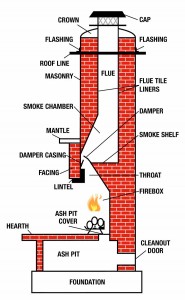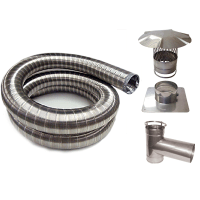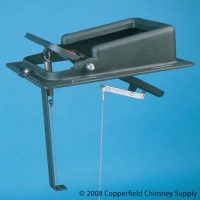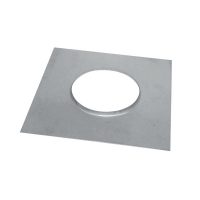Fireplace Chimneys
Fireplace chimneys are a necessity for all fireplaces. This is true if the fireplace is indoor or outdoors. This will vent away the smoke from the fire and give you fresh air that is drawn into the fire. The fireplace chimney also regulates the temperature to a certain degree, it draws the excessive heat up the chimney, drawing it away from the fire.
Originally, fireplace chimneys were made with brick and mortar. Inside the bricks there are fireproof tiles. Since safety technology improves, the newer models use a metal flue that is easy to install. Fireplace chimneys must be able to withstand the constant heating and cooling process of the fireplace and also the corrosive by products produced after combustion of wood.
Fireplace chimneys have a flue, this contains the products of combustion and forms the inner and the most important layer of fireplace chimneys. In the case of wood burning fireplaces, a highly flammable substance called creosote is deposited on the flues, which if built up enough can block the passage of air through the fireplace chimney. A clean flue is crucial to the venting of the harmful gases to the atmosphere.
Fireplace Chimneys: The components
Apart from flues, fireplace chimneys include chimney caps, chimney crowns (splash), chimney flashing, chimney dampers, and cleanout doors. Chimney caps can be made of made of copper, stainless steel or black steel. These act as the chimney cover that prevent downdrafts and protect the chimney against rain and animal invasions. Chimney crown is the concrete that is poured on the very top of the fireplace chimney. It also prevent water from filtrating into the masonry. Chimney Dampers close the fireplace chimneys when they are not in use, whereas the chimney flashing provides waterproofing to the chimneys. Stainless steel, cast-in place (a thick layer of cement-like material) and terracotta chimney liners create a smooth passageway for drafting and improves the performance of fireplace chimneys. The cleanout doors are metal doors, found at the base of the fireplace chimneys, which creates an easy access point to remove the ash from the ash pit.
The design and size of fireplace chimneys affect the performance of fireplaces. A good diameter and height is needed for the proper combustion of fuels. Further, the fireplace chimneys must have a minimum square inch opening to prevent smoke from entering into the home.







